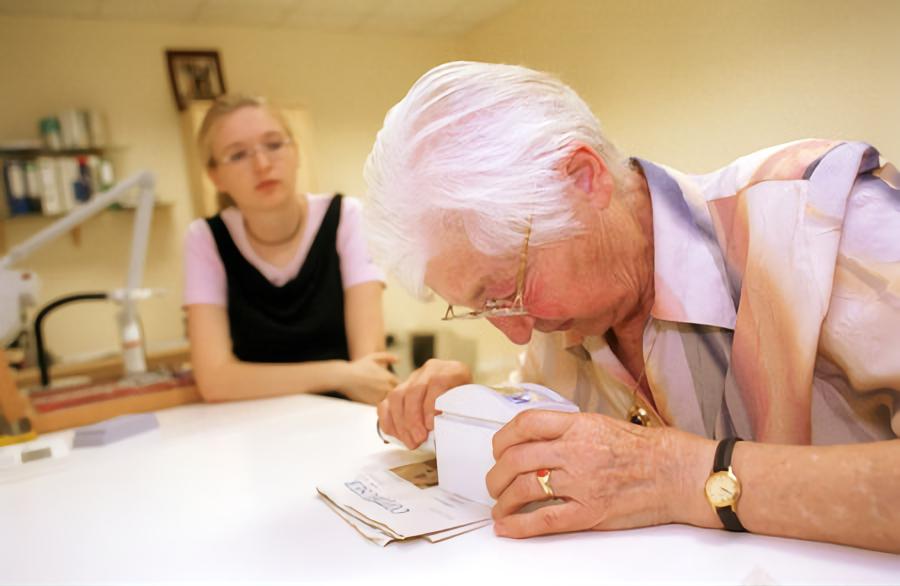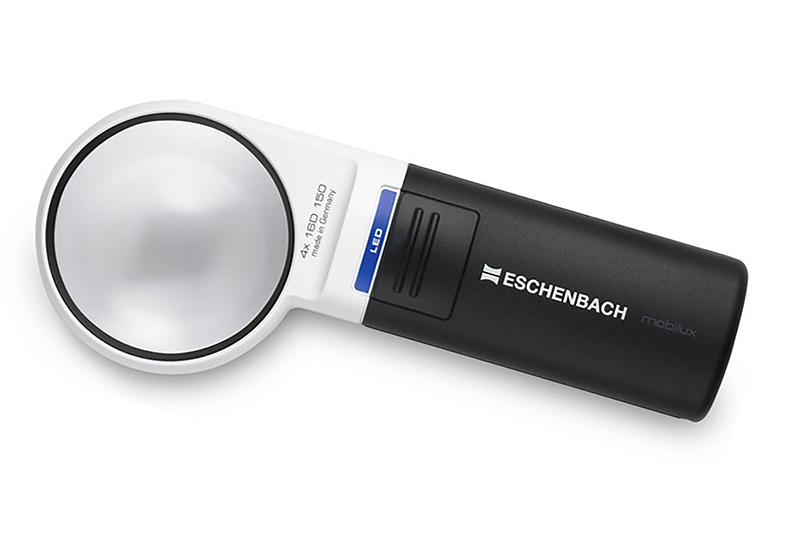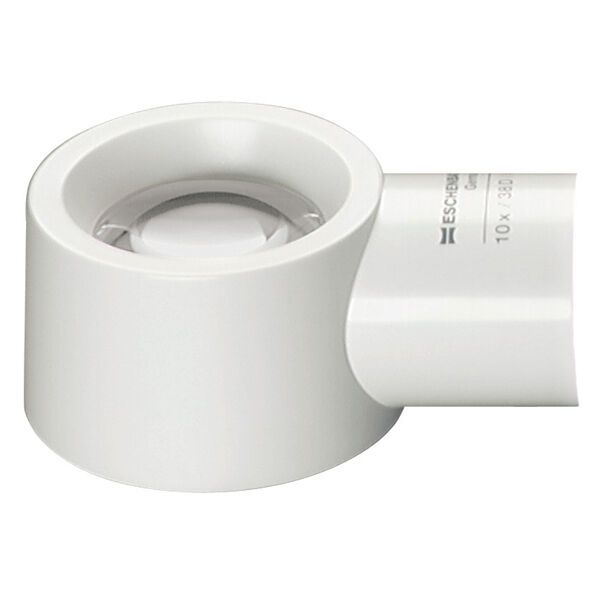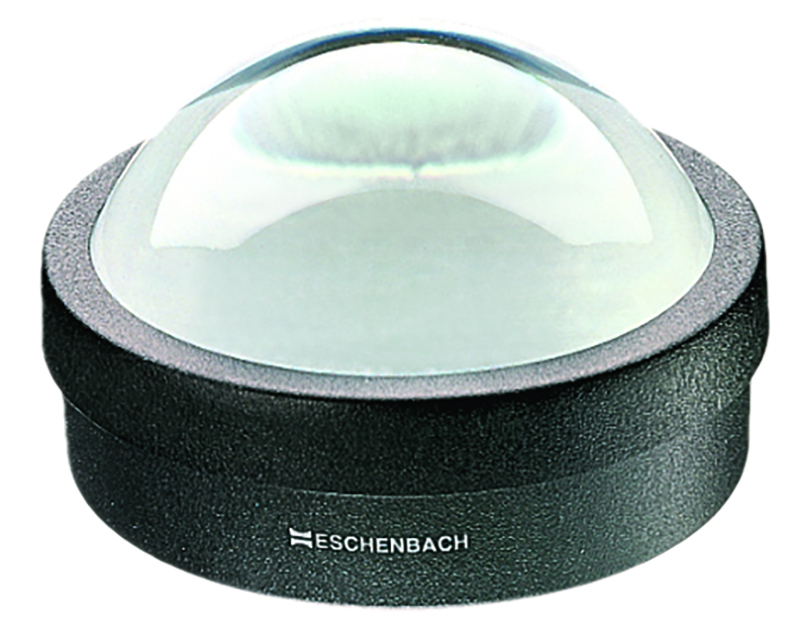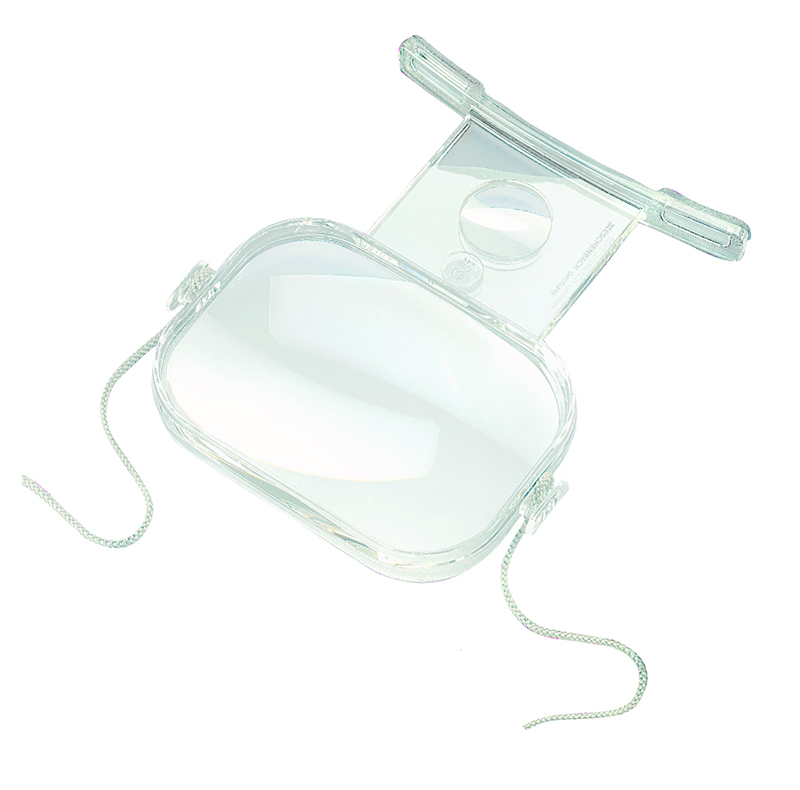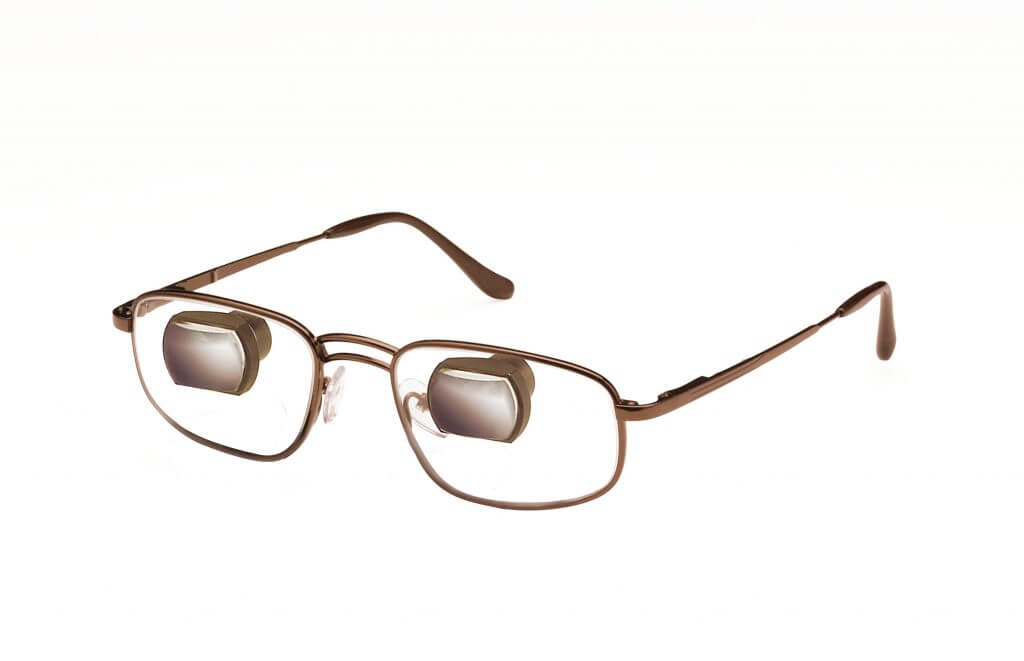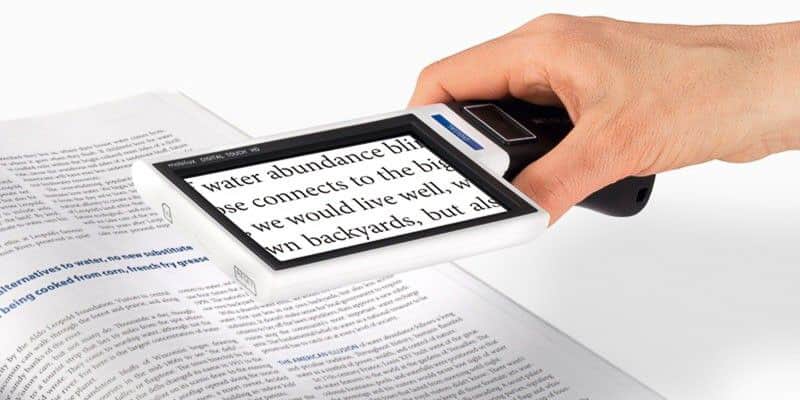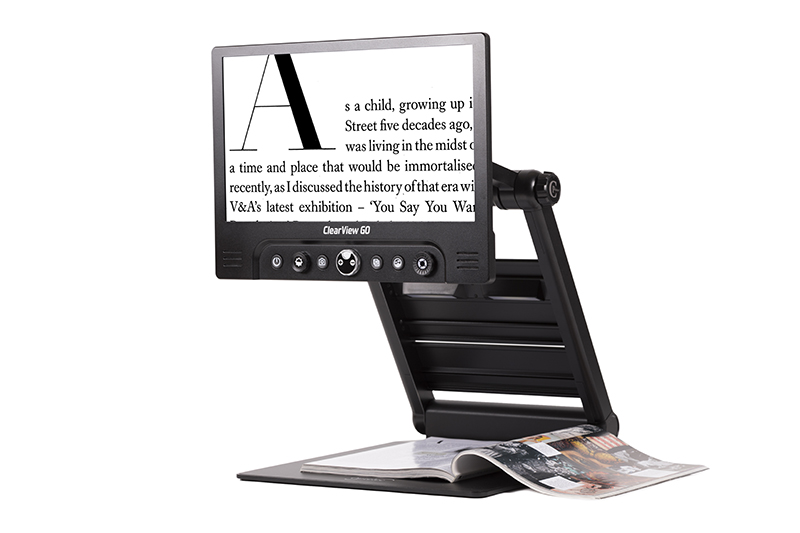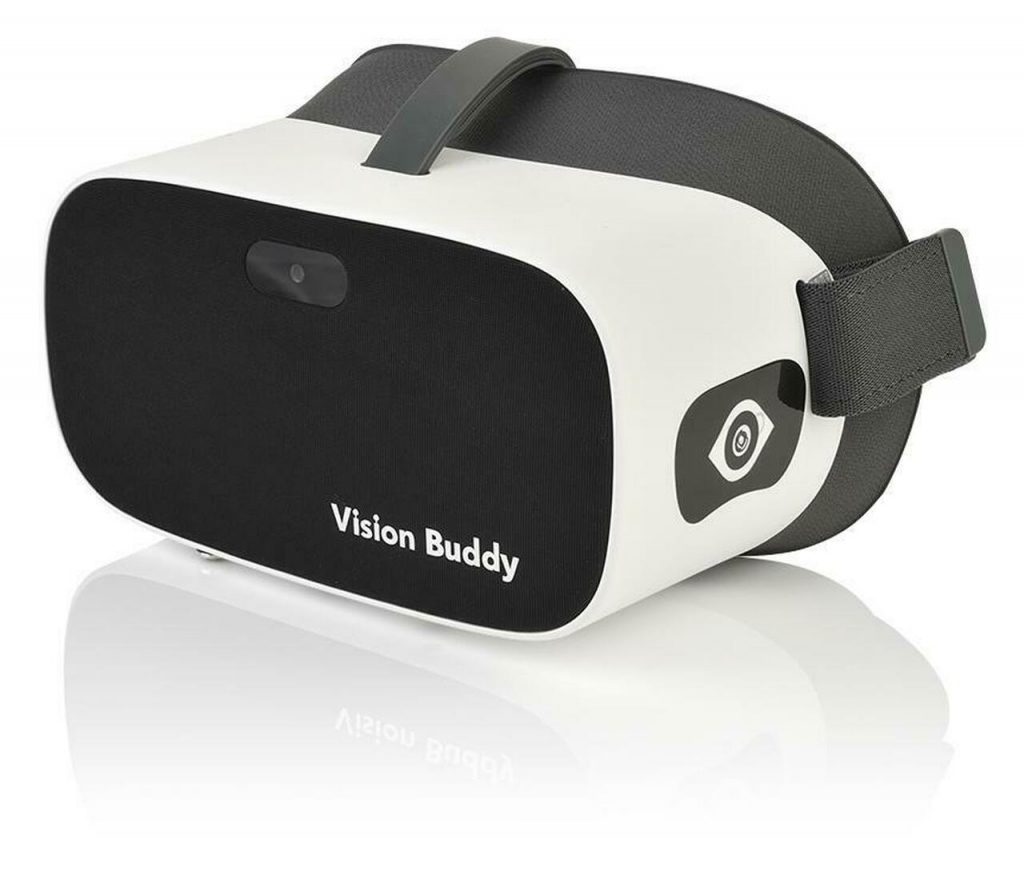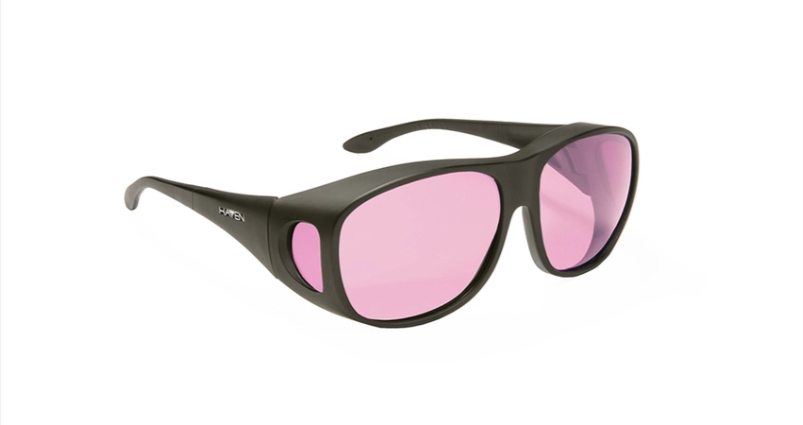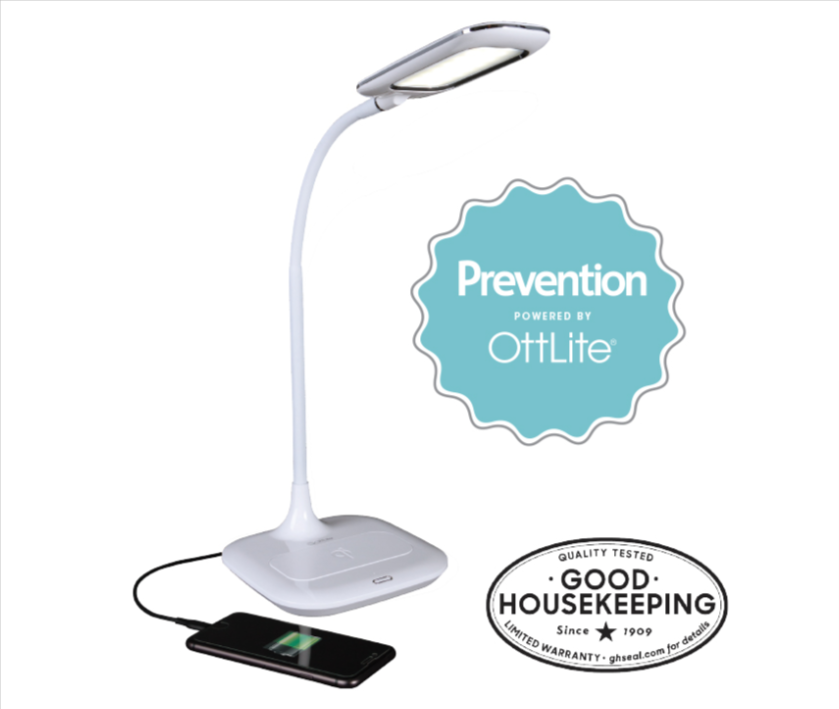Having macular degeneration has its challenges. Luckily there are some very smart people that have developed some pretty cool devices to aid those with AMD in doing their daily tasks. Low vision aids for reading, writing, watching tv, moving safely around your house, and much more. In this article, we’ll talk about the many different types of Visual Aids for Macular Degeneration.
Magnifiers, tablets, and smartphones, as well as large-print goods, can all help you make the most of your eyesight and keep your life running smoothly.
Things may take a little longer, but you can improve your quality of life by learning some new approaches.
Types of Visual Aids For Macular Degeneration
- Magnifiers
- Electronic magnifiers
- Wearables
- Daily living aids
- Color contrast filters
- Large print
- Larger than normal products
- Lighting
Magnifiers
Handheld magnifiers
This is the most common design. These portable magnifiers have a handle and the lens is held away from the item. Lighting is included in several handheld magnifiers. Some are small enough to fit in your pocket, making them ideal for shopping and other outdoor activities. Handheld magnifiers come in a variety of magnifications. Many of them even have wireless charging. The price will vary depending on the quality of the lens and the lens coatings, the type of lighting, and the type of power source and charging system.
Check them Out Here
Stand magnifiers
These come with either a permanent stand or a foldable stand and are meant to stand on the page to keep the lens and text at the proper distance. If your hands are shaky, stand magnifiers may be beneficial. They come in a variety of magnification levels. Some low-power models include a deep enough stand to accommodate a pen for writing. They can be powered by electricity or by batteries. Some are rechargeable and can have wireless charging.
Check them out Here
Brightfield / Flatfield magnifiers
These are magnifiers in the shape of a paperweight or a shaped ruler. To read a line of text, place the magnifier flat on the page and slide it across. They are only available in lower magnification levels, although they can be combined with other magnifiers.
Because bar magnifiers only magnify in one direction, letters become taller but the text width remains unchanged. This allows many words to be seen at the same time on the reading material.
Check them out Here
Magnifiers are worn around the neck
These magnifiers are ideal for hobbies that need you to keep your hands free, such as crocheting. Because they are only available in lower magnification settings, they may not be useful for people with advanced macular disease.
Check them out Here
Telescopes and microscope glasses
Telescopic lenses can be mounted in a spectacle frame for long-distance viewing. These are like miniature binoculars. They can either be purchased in a full diameter style which takes up the whole lens or in a bioptic in which the telescope is mounted in the upper portion of the lens and is used just for spotting. These are used for people with macular degeneration (AMD) to still be able to drive in many cases. Microscope glasses are similar but are used just for near work. Both of these come in a variety of magnification power. Microscope glasses help the visually impaired read in a more natural way, letting their hands be free to hold the reading material and scan normally. They do however require holding things closer.
Telescope and microscope glasses can be made with your prescription in them and this will require your low vision optometrist to fit and prescribe them for you.
As your macular degeneration progresses you’ll need more robust and stronger magnifiers to do your tasks. Seeing your eye doctor regularly to get advice on the best devices is probably a good idea.
Low vision specialists specialize in visual aids for macular degeneration. So they advise you on what power and what devices will work the best for your specific applications. For example, if you have large print books a lower-powered handheld magnifier or stand magnified will allow you to see more of the text. If you are trying to read a small print newspaper then a higher magnified text will be needed and stronger magnifiers.
The type of magnifier you require is determined by the following factors:
- your visual acuity
- the task’s magnitude the task’s nature
whether you’re looking at close or far items and for how long you’re doing the task.
Useful tips for magnifiers
Begin by bringing the lens close to the eye, then getting the item closer until it is in focus. This will provide you with a larger field of view, allowing you to see more text at once.
You can only use the magnifier with one eye unless it has low power. Use it with the eye that sees the best whenever feasible.
When looking through the magnifier, if the image looks upside down, bring the object closer to the lens.
Stay still and even when using a handheld or stand magnifier to avoid losing your location.
The image from the lens’s center is the cleanest and least distorted. Reading across the lens will distort the image towards the edges.
Make the initial word as in focus as possible. Keep your head, eyes, and magnifier motionless while you shift the item of your concentration once you’ve found the ideal viewing position. This is referred to as the ‘Steady Eye Strategy.’
Electronic magnifiers
These portable electronic magnifiers are macular degeneration seeing aids that use a video camera and a small screen to view items. These low vision devices are becoming more and more sophisticated. They have a huge range of magnification, have colored filters to help with contrast, and some even have OCR technology to read text back to you.
Many of these electronic devices are small pocket magnifiers and many are mid-sized and can fit over a book with a pop outstand. They can help with reading and writing and other tasks such as taking a snapshot of a fast-food menu and reading it back to you or magnifying the image.
Check them out Here
Video magnifiers
Closed-circuit television (CCTV) Magnifiers are another name for these. The image of an object or text is projected onto a TV screen or built-in monitor by placing it beneath a camera.
Larger desk-top devices can attain extremely high magnification levels, but they are hefty and take up a lot of space.
A portable camera on other devices may be able to slide over the text. When looking at items with a somewhat curved surface, such as a large book with writing that slopes towards the spine, this can be advantageous.
Portable devices with a built-in camera and screen can assist you in reading more conveniently. However, due to the screen size, you only see a small portion of the text.
Check them out Here
Wearables
Wearables are a category of low vision devices that are like wearing a virtual reality headset. Some of them look just like a VR headset and actually function similarly. They allow the user to zoom in on things from far away. Many of them have streaming features so that you can watch tv right in the headset. Some have internet connectivity and can send and receive messages and phone calls. Many of the wearable low vision aids are getting smaller and less bulky for comfort and making them more mobile.
These can be costly, so think about what you’d like to use it for and test it out first. Some of the manufacturers offer an in-home trial period or they may have a sales rep that can bring it to your home for a demonstration. Many low vision specialists also have them for demonstration purposes also. They’re best for reading food packages and letters, looking at images, and other quick tasks, not for long periods of reading. You might benefit from less expensive gadgets.
Check them out Here
Daily living aids
These are anything that makes life around the house or life in general easier. Things like colored stickers for your pots and pans or cooking utensils. Macular degeneration sight aids like computer keyboards with contrasting colors and large print playing cards. Notification devices that tell you when your coffee cup is almost full. Another handy low vision aid is a large print tv remote. Large print books, talking watches, and large clocks are also in this category.
Low vision occupational therapists are the experts in this area, they can come to your house and assist you in making your home safe and keep you more efficient and independent.
Colored filters
Another very common macular degeneration seeing aid is colored filters. Oftentimes a macular degeneration patient may lose their ability to see the contrast. A simple yellow filter can help with this. An amber lens for driving at dusk in low-level lighting situations is a good example of this type of AMD vision aid. A specialized pair of low vision glasses called an Escoop combines either a yellow or orange filter, prism, and magnification to help those with minor vision loss due to AMD see better. These do require a prescription from your low vision specialist. Escoops help contrast, magnify images, and can move an image to a healthier part of your macula.
There are many different colored filters or tints that can be used depending on what your low vision condition is and what conditions you will be using them in.
Cocoons are a brand of glasses that go over the top of your own glasses and come in a variety of colors. Yellows, ambers, and browns are probably the most beneficial for AMD.
Check them out Here
Lighting for low vision
OttLite is a company that has a variety of lamps to assist low-vision patients. Bright white light helps people read and provides more contrast and less glare than other light sources. OttLite has many different types of lamps. From desktop lamps to floor lamps that can be positioned over a chair for comfortable reading. Their Clearsun LED lights reduce eye strain by 51%. Some of their newer model desk lamps also have wireless charging which is also a huge benefit for the visually impaired. Now you don’t have to find that little port to plug in your phone.
Many visual aids for macular degeneration are expensive and can be cumbersome. People often don’t think about simple things like good lighting. Having the right light can make all the difference. Not only does it cut glare and improve contrast but it causes the pupil to constrict which also gives a pinhole effect that will decrease light scatter and make things more clear.
See Lighting options Here
FAQs for Visual Aids For Macular Degeneration
Are there special glasses for macular degeneration?
Yes, although they aren’t exclusive to people with AMD, glasses that help with magnification, cut glare, and reduce blue light are all helpful as macular degeneration aids.
How can I improve my vision with macular degeneration?
See your eye doctor regularly, take an AREDS 2 supplement and consult a low vision specialist for advice on low vision aids that will benefit you.
How can I watch TV with macular degeneration?
If your vision is bad enough and it warrants having a special vision aid, the best device for this is called the Vision Buddy. It is made for this exact application. Just plug in your streaming device and watch tv right in the headset.
Can vision be restored after AMD?
Unfortunately, most damage done by AMD is permanent, however, if the wet stage is caught early and treated some of your vision may return as long as it hasn’t gotten to the stage of scarring.
What color lens is best for age-related macular degeneration?
Yellow is the most common lens filter or tint due to its contrast and glare reduction, however, everyone is different and you should try a few to see what works best for your condition.

